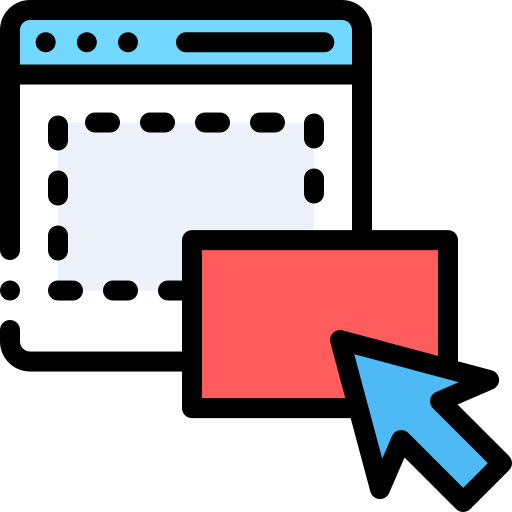Take control of your dedicated server with your eyes closed!
More than 1000 configurations in 120 locations, deploy in few seconds starting at 9.99eur/mo !
- Best Hosting For Busineses
- deploy in few seconds starting at 9.99eur/mo !
- deploy in few seconds starting at 9.99eur/mo !

Our Services

Hosting
Need a home for your website? Shared hosting is affordable & easy to use. We'll help you find the perfect fit!

VPN
Browse securely & privately. A VPN encrypts your data & hides your IP, keeping you safe on public Wi-Fi.

Domain Name
Your website's address. Get a memorable domain name that reflects your brand with our free generator.

Website Bulder
Dress up your website! Find a beautiful & functional WordPress theme to match your style and needs.

Email Marketing
Connect with your audience. Email marketing is a powerful tool to grow your business.

WordPress Tool
Supercharge your WordPress site! We'll help you find essential tools to optimize & manage your website.
How we give the best for you
We understand your needs are unique. That's why we don't just give you any information, we strive to provide the most relevant and helpful content possible.

Promotional Email
- Affordability
- Boost sales
- Cost-Effectiveness
- Measurable Results
- Targeted Marketing For Promotion

MemberShip Plugin
- Recurring Revenue
- Exclusive Content
- Stronger Community
- Streamlined Payments
- Targeted Communication

Drag And Drop Website Builder
- Easy to Use
- Saves Time
- Flexibility
- Cost-effective
- Low Maintenance
Most of the customers go for

SHARED HOSTING
- Cost-Effectiveness
- Ease of Use
- Maintenance
- Scalability
- Customer Support

REMOTE ACCESS VPN
- Secure Connectivity
- Remote Productivity
- Cost Savings
- Access Control
- Multiple Device

AI WEBSITE BUILDER
- Effortless Build
- Budget-friendly
- SEO Advantage
- Personalization
- Faster Development
WHO ARE WE

Top 10 products
Forget endless options. We give you the best 10, saving you time and effort.

100% FREE USE
No subscriptions, no fees. Just free info to find the perfect digital product.

FREE FROM FRAUD
Trustworthy recommendations. We prioritize YOU, not shady deals.
Frequently Asked Questions
There are 4 main types of web hosting:
- Shared: Cheapest, good for starters (think shared apartment).
- VPS: More power than shared (your own space in an apartment).
- Cloud: Grows with your website (renting in a big building).
- Dedicated: Most control (having your own house).
FTP stands for File Transfer Protocol. It’s a way to upload and download files between computers on a network. Imagine it like a dedicated courier service for your files.
Choosing web hosting depends on your website’s size and traffic.
- Small website, low traffic? Shared hosting is affordable and easy to use.
- Growing website, moderate traffic? VPS hosting offers more power and control.
- High-traffic or complex website? Consider cloud or dedicated hosting for scalability and security.
Similar to choosing a hosting plan, the amount of bandwidth and storage you need depends on your website’s size and traffic.
- Small website, low traffic: Start with a basic plan offering 1GB storage and 3-5GB bandwidth.
- Growing website, moderate traffic: Opt for plans with 5-10GB storage and 10-20GB bandwidth.
- High-traffic or complex website: Consider plans with 20GB+ storage and 50GB+ bandwidth, or explore scalable cloud options.
A database is like a giant organized filing cabinet for your computer. It stores information in a structured way, often using tables with rows and columns, so you can easily find and manage it. You can think of it as a collection of related data that’s controlled by special software to keep it organized.
WordPress is a popular platform for creating websites. It’s especially beginner-friendly because you don’t need coding knowledge to use it. Here’s a breakdown:
- Easy to Use: Drag-and-drop editing and pre-designed templates make website creation accessible.
- Free & Open-Source: You can download and use the basic software for free.
- Versatile: Suitable for blogs, portfolios, businesses, and even online stores.
- Customizable: Plugins and themes allow you to personalize your website’s design and functionality.
Here are 3 key ways to secure your website:
Strong Foundations: Use strong passwords, keep your software updated (WordPress, plugins, themes), and choose a reliable hosting provider with security features.
Encryption: Install an SSL certificate to encrypt data transfer between your website and visitors, making it harder for hackers to steal information.
Backups: Regularly back up your website’s files and database. This allows you to restore your site quickly in case of security incidents.
Email hosting is like renting out a space specifically for your business emails. Unlike free email services, it lets you have professional email addresses ([email address removed]) and often comes with extra features like increased storage and security.
Setting up email with your domain involves:
- Choosing an email provider (like Google Workspace).
- Creating email addresses using your domain name.
- Updating your domain’s settings with MX records (pointing to your provider).
- Verifying domain ownership.
It can be technical, but providers often have guides or support to help.
A control panel is a user interface that allows you to manage settings and features of various systems. Imagine it like a central hub with dials and buttons to control different aspects of something.




